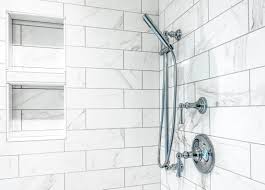How to Repair a Shower Diverter
If you have a broken shower diverter, you’ll want to repair it as quickly as possible. Fortunately, the process isn’t difficult, and it won’t cost much. To repair a shower diverter https://canduplumbing.com/how-to-repair-a-shower-diverter/ you’ll need to remove the spout from the wall, remove the screws, and then pull the handle out of the diverter. If the handle is stuck, you may need to gently tilt the faucet handle, or you may need to access the area behind the wall. Generally, this replacement is easy, and you only need a few tools to do the job.
First, remove the diverter stem and washer. If the diverter stem is loose, you need to unscrew it. If the spout is stuck, you can use a screwdriver or a hex key to pry it open. Once you’ve removed the washer, you can replace it with a new one. Then, lubricate the stem with plumber’s lubricant.
To fix the diverter, first remove the faceplate. Then, remove the screw that secures the faceplate. You’ll need to tighten it clockwise to eliminate any loose screws. Once you’ve done that, you can test your diverter by running water from the shower or tub. If it works, you’re done! You’ve successfully repaired your shower diverter! And it won’t take long to do this!
If the stem is corroded, or the spring is weak, you can replace it. Then, you can try to clean out the spout by using duct tape. Then, you can lubricate the stem with plumber’s lubricant. When you’re done, it’s time to install the shower diverter. Once the spout is back in place, you’re ready to use it.
In case the faceplate is corroded or has a weak spring, you’ll have to replace it. If the stem is corroded, you can replace it by ordering a replacement. If the faceplate isn’t in place, you can repair the diverter by taping the stem with duct tape. But if the faceplate isn’t there, you’ll need to buy a new diverter, as it will be impossible to remove it if you’ve damaged it.
To fix a shower diverter, remove the stem. If the diverter is corroded, you’ll have to unscrew the screw. Otherwise, the diverter will be plugged. Once it’s installed, the handle can be replaced. Once the stem is installed, replace the packing nut. Then, you can screw the diverter back on the stem. After that, the screws should be tightened.
While a diverter may need to be repaired, you can still use it. After you’ve completed your work, you should clear the work area to avoid splashing water or removing broken parts. Once you’ve repaired the diverter, you can replace the washer or the escutcheon. After the valve has been replaced, you can reassemble the handle and the diverter. If you’re confident enough, you can test it by turning on the water.
